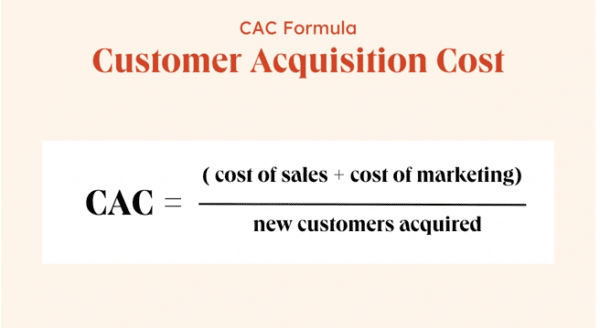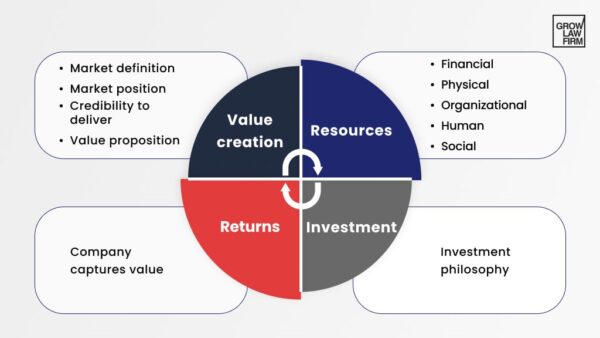Table of Contents
Measuring Return on Investment (ROI) is paramount for law firms striving to assess the effectiveness of their marketing strategies and ensure sustainable growth in an ever-competitive legal landscape. In an era where data-driven decisions dominate today’s business environment, measuring marketing ROI for your law firm is crucial. As a player in the field, you must adopt comprehensive approaches to quantify the value derived from your investments.
Whether digital marketing initiatives, client acquisition campaigns, or internal process optimizations, understanding and quantifying marketing ROI for law firms assesses financial success and guides firms toward strategic decisions that can enhance efficiency, client satisfaction, and overall profitability.

This multifaceted evaluation goes beyond monetary gains. It also holistically boosts the effectiveness of business efforts, including client retention rates, staff productivity, and legal services’ effectiveness. Law firms must navigate various metrics and analytical tools in this complex and dynamic environment to evaluate their ROI.
This article breaks down the intricacies of measuring marketing ROI for law firms and sheds light on the methodologies, key performance indicators, and strategic insights that can empower you as a law firm to make informed decisions and thrive in the competitive legal industry.
Digital Marketing Strategies:
In your quest to enhance your law firm’s online presence and reputation, digital marketing strategies play a pivotal role in reaching a broader audience and measuring the return on investment (ROI) for your efforts. One of the primary ways digital marketing achieves this is through data analytics and tracking tools.
Using various tools like Google Analytics, you can meticulously monitor website traffic, user behaviour, and conversion rates. These insights comprehensively understand how potential clients engage with your online platforms. A detailed analysis lets you pinpoint which digital channels drive the most traffic and which specific campaigns generate leads, allowing you to allocate your resources strategically.

Digital marketing also allows you to employ targeted advertising campaigns. You can only do this effectively by measuring the marketing ROI for your law firm, after which you can take further actions, such as leveraging platforms like Google Ads and social media advertising. From these platforms, you can precisely target your desired demographic based on location, age, interests, and online behaviour.
You need such precision to ensure your marketing efforts are directed toward the most relevant audience, increasing the likelihood of generating quality leads. By analyzing the performance of these targeted campaigns, you can measure the cost per acquisition, enabling you to assess the efficiency of your marketing expenditure. This data-driven approach not only maximizes your ROI but also provides valuable insights into the preferences and behaviours of potential clients, allowing you to refine your strategies for even better results.

Simply put, analyzing your digital marketing results is in itself a way of measuring the marketing ROI for your law firm. You can create a direct communication link that establishes connections with both current and prospective clients via social media, email marketing, and content marketing. Engaging content, such as informative blog posts, videos, and webinars, also positions your law firm as an authority in your field and encourages user interaction.
You can gauge your content’s level of interest and resonance with your audience by tracking user metrics related to engagements, such as likes, shares, comments, and email open rates. This interaction provides qualitative data that complements quantitative metrics, offering a holistic view of your digital marketing efforts. This means that measuring the marketing ROI for your law firm requires you to analyze both quantitative and qualitative data for better decision-making.
Client Acquisition Costs:
Understanding client acquisition costs is crucial for measuring ROI for your law firm. This approach enables you to assess how efficiently you convert your marketing and business development efforts into actual clients. To calculate the client acquisition cost, use the formula below:

Once you’ve determined your client acquisition cost, comparing this figure against your clients’ lifetime value (LTV) is essential. The LTV represents the revenue a client is expected to generate throughout their engagement with your firm. You’re likely on the right track if your client acquisition cost is significantly lower than the LTV. It stipulates that your marketing and sales endeavours are generating a positive ROI.
Moreover, monitoring client acquisition costs over time allows you to refine your marketing strategies. You can pinpoint which marketing channels and campaigns are most cost-effective in acquiring new clients. This data-driven approach helps you allocate your resources wisely and adjust your marketing budget to prioritize strategies that yield the best marketing ROI for your law firm. Ensure continual optimization of your client acquisition process based on this data to enhance your law firm’s efficiency in gaining new clients while maximizing your ROI in the long run.

Case Management and Efficiency:
Evaluating case management and efficiency is a strategic approach for measuring the marketing ROI for your law firm. Effective case management systems and practices contribute to increased productivity, reduced operational costs, and improved client satisfaction, ultimately impacting your firm’s profitability. To begin measuring marketing ROI for your law firm in this context, it is essential to consider the time and resources spent on each case.
Start by tracking the hours invested, the number of staff involved, and any direct expenses incurred, such as court or expert witness fees. Then, calculate the average cost per case. Compare this cost per case to the revenue generated from successfully closed issues. This simple comparison provides clear insight into your firm’s return on investment. If the revenue generated from each case surpasses the costs, it indicates a positive ROI. Moreover, consider the time saved with efficient case management, which can be reinvested in other areas of your practice or used to take on more cases. This additional capacity can lead to even higher ROI over time.

Efficiency in case management as a measure of the marketing ROI for your law firm goes beyond cost analysis. It also influences client satisfaction and referral rates, which impact your firm’s revenue long-term. Contented clients are more apt to refer others to your firm and become repeat clients. By monitoring client feedback and case outcome metrics, you can gauge the quality of your case management and its effects on client satisfaction.
A positive reputation and word-of-mouth referrals contribute to sustainable growth and enhanced ROI. Hence, optimizing case management and efficiency directly improves the bottom line of your law firm and ensures that the investment in marketing your legal practice generates a solid return.
Client Retention and Lifetime Value:
It is one thing to get a client through your marketing efforts and another to retain that client for the long run. Considering client retention and lifetime value is a strategic and insightful approach to measuring the marketing ROI for your law firm. To use this metric, start by evaluating the rate at which your firm retains clients over time. Retained clients provide a consistent revenue stream and become a source of referrals, further expanding your client base and ensuring sustainability in the highly competitive legal business environment. Monitoring client satisfaction through surveys, feedback forms, or regular check-ins can offer valuable insights into their experience with your firm.

Simultaneously, understanding the lifetime value (LTV) of your clients is pivotal. LTV represents the total revenue your firm can expect to generate from a client throughout their entire engagement with your services. Calculate this value by considering the average income earned from a client per year and estimating how many years, on average, the client remains with your firm. By comparing the LTV against the cost of client acquisition, you can determine whether your investment in acquiring new clients is paying off.
When using this metric to measure the marketing ROI for your law firm, you must also consider other dynamics that play a role, such as providing exceptional service, personalized communication, and regular follow-ups to increase client satisfaction.
Training and Skill Development:
Incorporating training and skill development programs is a strategic method for measuring ROI for your law firm due to the direct impact on the quality of your legal services. Investing in continuous learning and skill enhancement for yourself and your team ensures that your firm stays competitive and relevant in a rapidly evolving legal landscape.

The first step in measuring marketing ROI for your law firm in this context involves identifying specific skill gaps within your team. The process consists of conducting assessments to pinpoint areas where additional training is necessary, whether related to new legal technologies, specialized legal expertise, or communication skills.
Once these training programs are implemented, monitor your team members’ progress and skill improvement. Track metrics such as successful case outcomes, client satisfaction rates, and the efficiency of internal processes. For instance, if your team receives training on a new case management software, assess how this software impacts the time taken to process cases, the accuracy of data, and overall team productivity. Quantifiable improvements in these areas are tangible evidence of the ROI generated by the training initiatives.
You can also measure the success of training programs through employee feedback and engagement levels. High levels of employee satisfaction and enthusiasm for learning often translate to enhanced performance and increased client satisfaction, ultimately contributing to a desirable ROI for your law firm.

Investing in training and skill development has long-term benefits that extend beyond immediate financial gains. A well-trained team is more efficient, effective, and adaptable. Continuously updating skills ensures your firm can handle diverse cases, attracting a broader client base and potentially higher-value circumstances. Note that your firm’s reputation improves as clients recognize the expertise and professionalism of your team.
Positive client experiences and a stellar reputation lead to client loyalty, referrals, and positive reviews, all of which contribute significantly to your firm’s ROI in the long run. Therefore, viewing training and skill development as a strategic investment and a form of marketing, hence a marker of the marketing ROI for your law firm, enhances its performance and secures its future success and profitability.
Tracking and Analyzing Key Performance Indicators (KPIs):
Embracing systematic tracking and analysis of key performance indicators (KPIs) is a potent strategy for measuring the marketing ROI for your law firm. These KPIs serve as vital metrics that reflect your practice’s efficiency and effectiveness. Start by identifying the KPIs most relevant to your firm’s objectives, such as client acquisition costs, conversion rates, client satisfaction scores, average case resolution time, and revenue per client. You will comprehensively understand various aspects of your firm’s operations by meticulously tracking these metrics.
Analyzing these KPIs provides actionable insights that can significantly impact your firm’s ROI. For instance, monitoring client acquisition costs against the revenue generated from new clients helps you assess the efficiency of your marketing efforts. If the price of acquiring clients is high relative to their income, it indicates a need to refine your marketing strategies.

Similarly, tracking conversion rates and client satisfaction scores offers valuable perspectives about the effectiveness of your services and client interactions. High conversion rates, coupled with positive client feedback, indicate a well-functioning and client-focused practice. This improves client retention and generates positive referrals, which are integral to increasing your firm’s profitability.
The beauty of KPIs also lies in their adaptability. Regularly reviewing specific metrics identified as important for your law firm’s marketing strategy allows you to see trends and patterns over time. For instance, if you notice a decline in client satisfaction scores or an increase in case resolution time, it is an early warning sign. Prompt action can then be taken to address any issues, ensuring client satisfaction is maintained at optimal levels.
Additionally, by comparing current KPIs with historical data, you can gauge the effectiveness of implemented changes and strategies. This cyclical process of tracking, analyzing, and adapting based on KPIs becomes instrumental in measuring marketing ROI for your law firm and continuously improving your law firm’s performance, client relationships, and profitability.

Conclusion:
In the competitive landscape of the legal industry, measuring the marketing ROI for your law firm is indispensable when aiming for competitiveness and sustainability. This comprehensive exploration elucidates the multifaceted methodologies crucial for quantifying the value derived from marketing investments and efforts. From digital marketing strategies leveraging data analytics to client acquisition cost analysis, efficient case management, client retention tactics, and strategic training initiatives, the article delineates a holistic approach.
By tracking and analyzing Key Performance Indicators (KPIs), law firms gain actionable insights. Embracing the identified strategies for measuring the marketing ROI for your law firm ensures the firm’s financial viability and sustainable growth, which is crucial for the positioning of the law firm in the dynamic legal space.







